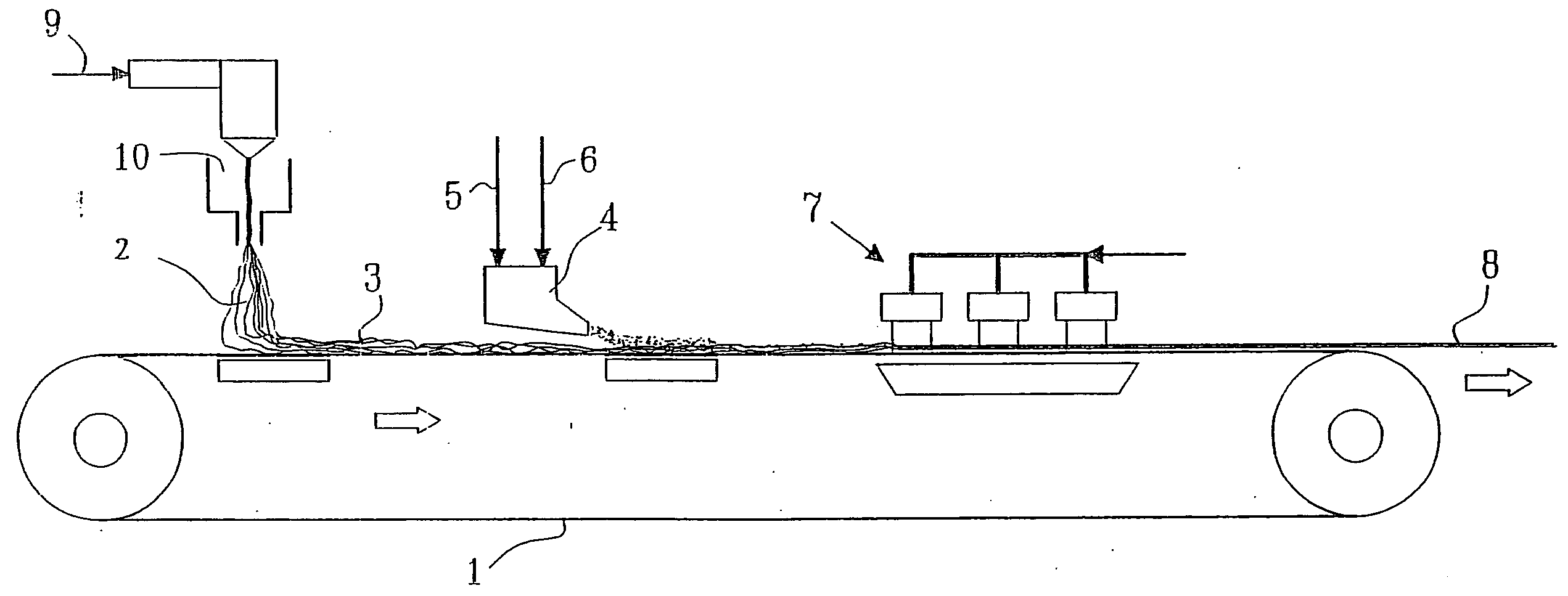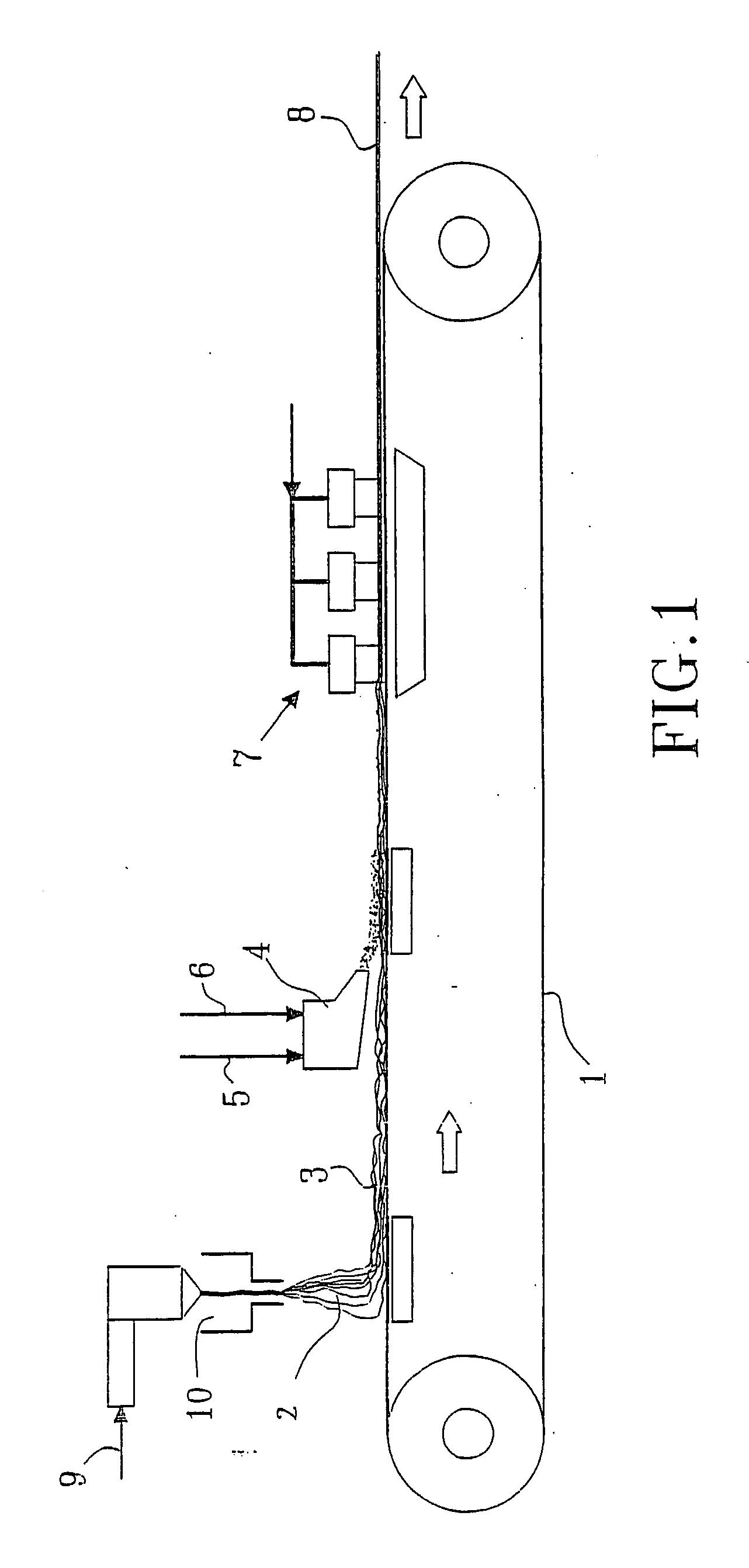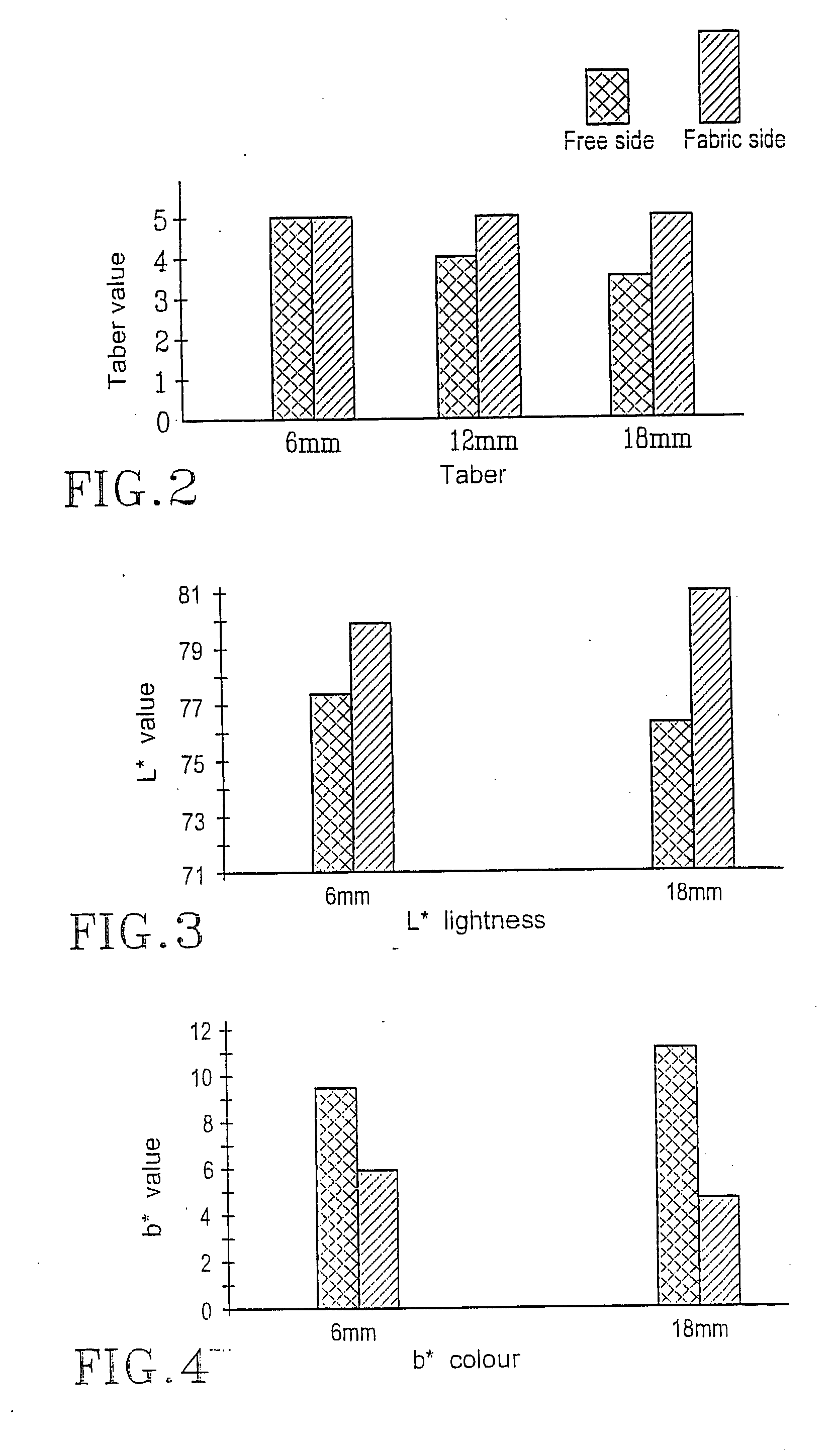Hydroentangled nonwoven material
a non-woven material, well-integrated technology, applied in the direction of weaving, textiles, papermaking, etc., can solve the problems of hydroentangled materials, marked two-sidedness, and the fibres of the different fibrous webs will not be integrated with each other, so as to reduce two-sidedness, reduce two-sidedness, and improve the textile feeling to the surface
- Summary
- Abstract
- Description
- Claims
- Application Information
AI Technical Summary
Benefits of technology
Problems solved by technology
Method used
Image
Examples
example 1
[0092] A 0.4 m wide web of spunlaid filaments was laid down onto a forming fabric at 20 m / min such that the filaments were not bonded to each other. The unbonded web of spunlaid filaments was slightly compacted and transferred to a second forming fabric for addition of the wet-laid components. By a 0.4 m wide headbox a fibre dispersion containing pulp fibres and shortcut staple fibres was laid onto the unbonded web of spunlaid filaments and the excess water was drained and sucked off.
[0093] The unbonded spunlaid filaments and wetlaid fibres were then mixed and bonded together by hydroentanglement with three manifolds at a pressure of 7.0 kN / m2. The hydroentanglement was done from the free side and the pulp and staple fibres were thus moved into and mixed intensively with the spunlaid filament web. The energy supplied at the hydroentanglement was 300 kWh / ton.
[0094] Finally the hydroentangled material was dewatered and then dried using a through-air drum drier.
[0095] The total basi...
example 2
[0097] The set-up of Example 1 was repeated with blue coloured shortcut polypropylene staple fibres to study the mixing / integration of the staple fibres with the continuous spunlaid filaments and the pulp depending on the staple fibre length. The total basis weight of the composite material was around 80 g / m2 and the composition was 25% spunlaid filaments, 10% shortcut staple fibres and 65% chemical pulp. The titre of the spunlaid filaments was 2.3 dtex. The lengths of the blue shortcut 1.7 dtex PP staple fibres were 6 and 18 mm respectively.
[0098] When the materials were observed visually it was obvious that the free side initially containing the 10% blue coloured staple fibres was more blue (or darker) compared to the fabric side. The lightness and colour of the materials were characterised using a Technidyne, Color Touch model instrument. As shown by the L*-Lightness values in FIG. 3 the fabric side was always lighter compared to the free side—more coloured fibres stayed on the ...
example 3
[0100] The set-up of Example 1 was repeated with shortcut rayon staple fibres to study the mixing / integration of rayon staple fibres with the continuous spunlaid filaments and the pulp compared to polypropylene staple fibres. The total basis weight of the composite material was around 47 g / m2 and the composition was 25% spunlaid filaments, 10% shortcut rayon staple fibres and 65% chemical pulp.
[0101] The shortcut rayon staple fibres were 1.7 dtex and had a length of 6 mm.
[0102] The web was entangled by an entangling energy of 400 kWh / ton.
PUM
| Property | Measurement | Unit |
|---|---|---|
| length | aaaaa | aaaaa |
| length | aaaaa | aaaaa |
| length | aaaaa | aaaaa |
Abstract
Description
Claims
Application Information
 Login to View More
Login to View More - R&D
- Intellectual Property
- Life Sciences
- Materials
- Tech Scout
- Unparalleled Data Quality
- Higher Quality Content
- 60% Fewer Hallucinations
Browse by: Latest US Patents, China's latest patents, Technical Efficacy Thesaurus, Application Domain, Technology Topic, Popular Technical Reports.
© 2025 PatSnap. All rights reserved.Legal|Privacy policy|Modern Slavery Act Transparency Statement|Sitemap|About US| Contact US: help@patsnap.com



